Table of Contents or Collapse to Hide
Dehydrate food naturally using a dehydrator
Dehydrate foods naturally at home using a dehydrator. Dehydrated foods are a type of naturally processed food in which all the moisture and the water content are extracted so that it can be preserved for a long period of time. Dehydrated food is a process which also inhibits the growth of the microorganisms and bacteria so that the food can be preserved or stored for indefinite periods of time. Drying foods do not require electricity if you use solar means. Today, I will be discussing dehydrating foods naturally at home using an electric dehydrator.
This method, known as food dehydration is a traditional method, used by prehistoric people and still being practiced today. For instance, China dried eggs, India sun-dried the meat and the Japanese dried the fish and the rice.
Dehydrated foods at home are popular all across the globe. For example, banana chips are actually dehydrated food and everyone at one time has at least tried them. There are other foods as well, which are dehydrated for prolonging their expiry. However, only certain foods are best for dehydration.
What can be used to dehydrate foods?
There are many tools out there that can be used to dehydrate foods. I have owned many of the round white electric dehydrators over the years. Since moving away from plastic and not to mention killing a few dehydrators, I have switched it up to a stainless-steel model. I literally killed several of those dehydrators by using them all the time. They served their purpose.
- Air fryers can be used. I have an Instant Air Fryer and it has a dehydrator button feature built into it. I have never used it since I own a commercial-style one now.
- An oven can be used for dehydrating. I have not used it but many articles are written on how to use them.
- The good ole sun can be used. This method was the only method available back in the day. Some have vamped up “solar power” to dehydrate food.
- A smokehouse can be used to dehydrate foods with a smoky flavor.
WHAT ARE THE BEST FOODS FOR DEHYDRATION?
- Apple
- Corn
- Onion
- Pumpkin
- Meat (sliced super thin)
- Most vegetables
- Garlic
- Yogurt
- Eggs (at your own risk-but I do dry them)
- Herbs
- Potatoes (cooked and mashed)
- Carrots
- Grapes into raisins
- Banana (for chips)
- Kale
- Spinach
- Cherries
- Mushrooms
- Peas
- Tomatoes (for paste and powder)
- Turnips
- Mild Peppers
- Hot Peppers (for chili powder)
- and lots more
Using dehydrated foods in smoothies, as a thickener or a salad topping are just a few ways to use all the dehydrated foods. Ensuring the drying time is kept as well as cool, dry storage, will keep you in dehydrated foods for many months to come. I enjoy my fruits of labor especially in the winter when local fresh produce is limited. Opening a jar of dried peppers for chili is breathtaking, to say the least.
Dehydrator jerky recipe
It is surprising to know that you can preserve your home-made beef/venison or another jerky. Home-made jerky is more hygienic and healthier than the beef jerky available outside in stores and wrapped in plastic. First and most, there aren’t any preservatives or MSG added to the homemade jerky. Add liquid smoke and spices if you prefer before drying the meat. All you have to do is prepare your beef jerky at a low flame or temperature and then put the beef strips on your dehydrator for at least 8 to 9 hours. When the beef strips start to get cracks, store them in airtight containers. Voila, dehydrated meat is prepared!
Every year we use venison to make jerky. The meat is so lean, we actually have to add a little beef fat to it by grinding the venison with beef fat. Occasionally, we will slice it into very thin slices to smoke and dry. Our favorite is to lightly smoke the jerky at a very low temperature and then dehydrate the rest of the way. Check out the post on How to smoke meat naturally.
Making banana chips in a dehydrator
Bananas are one of the best foods to dehydrate. The moisture in them can be easily extracted using just lemon juice. Read my post on Lemon Health Benefits. If you have eaten those yummy banana chips, you’d be surprised to know that they are actually dehydrated food. All you have to do is apply freshly squeezed lemon juice on thin banana slices and let them dry at a low temperature for at least 3 hours or more depending on your method of drying. My son loved these when he was little, he would suck on them in his mouth until they turned mushy. Great “nana candy” I would tell him.
Vegetable crisps using an electric dehydrator
Potatoes, tomatoes, turnips, beetroot, mushrooms, and cucumbers are some vegetables that make the best-dehydrated food. You can prepare vegetable crisps for them. They are extremely low in fat as they are not fried but dehydrated. All you have to do is cut thin slices of vegetables, season and then dehydrate them by drying at a very low temperature for at least 4 hours or longer depending on the humidity and your type of dehydrator. Vegetable crisps are good to taste and make the perfect midnight snack.
Drying apples in a dehydrator
Apples are known for their versatile nature. You do not know how good apples are if you have not eaten apple crisps. Apples are one of the best-dehydrated foods. All you have to do is cut them into thin slices, dip in freshly squeezed lemon juice (to prevent browning) and season them with nutmeg, honey, cinnamon or even salt and chili powder. After that, dry on low for at least 4-6 hours or more depending on humidity and method chosen. I love making apple leather with homemade applesauce.
Dehydrating carrots in a dehydrator

I will be posting and linking to this post on making a carrot cake using the dehydrated carrots and raisins made in a dehydrator. It is so amazing how little space is needed to store enough carrots for one cake.
How to make fruit or yogurt leather using a dehydrator
Making fruit or yogurt leather is very easy. For this recipe, I will be using applesauce I made in the Instant Pot. Once the applesauce is cooled. Spread a thin, even layer on a silicone sheet and dry for several hours. Once dried, cut into strips about 4-6 inches long and roll up like a jelly roll. Each roll can be wrapped in wax paper and stored upright in a canning jar for traveling. The fruit rolls may be stored without wax paper if eating at home.
Don’t forget you can easily make yogurt roll-ups too! I like to add homemade jelly or jam to the yogurt before spreading on the sheet to make the leather. Unflavored yogurt can easily be dried and powdered. This can be added to smoothies, baking bread or eaten as an energy snack on the go.
Dehydrating sourdough starter
Dehydrating a sourdough starter can be an advantage for many reasons. First, if you go on vacation (what is that?), you won’t have to lose it or ask a neighbor to babysit and feed it. Second, if you just want to stop everything “sourdough” for awhile, dehydrating the sourdough starter is a good way to preserve that baby. Another reason to dry the starter is for sharing. If you wanted to mail a friend some of your 10-year-old starter in the mail but didn’t want to worry about it spilling. Drying would be an excellent remedy for this potential disaster.
To reconstitute the starter is very easy. Add dried starter to a new starter by adding equal parts of filtered water and flour in a jar with a lid. Crumble in the starter, I do not measure, maybe a tablespoon or more. It will not matter one way or the other. Use at least a heaping tablespoon to the new “starter”. Keep this on the counter for a few days and you’ll be back in business.
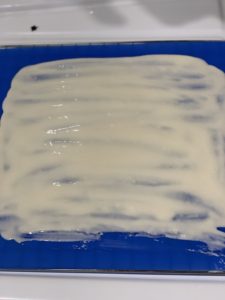
Dehydrating mashed potatoes
I love using leftover mashed potatoes and dehydrating them. I use the mashed potato powder in making bread, a LOT. Furthermore, the mashed powder can be reconstituted by adding hot water or hot milk with a little butter (of course) to have instantly mashed potatoes.
Heat water, milk, and butter. Add enough dehydrated mashed potatoes until a little soupy. The potatoes will thicken upon sitting for a few minutes. I use a ricer to make the fluffiest potatoes. Even though the leftover potatoes have milk and butter in them, I never have an issue with bacteria or mold. If you’d prefer, make the mashed potatoes and don’t add any milk or butter and dehydrate them right away once they cool a little.
Lacto-Fermented Corn for cornmeal
Using Lacto fermented corn for cornmeal is a whole new flavor. I absolutely love it! Once I make the fermented corn (fermented post will soon to follow) and it does its stuff, I put the jar in the fridge for a week, weeks or even a month or two before I dehydrate it. It all depends if I have the room in the dehydrator of if I remember to dry it. Steam or blanch as indicated below and proceed for making cornmeal.
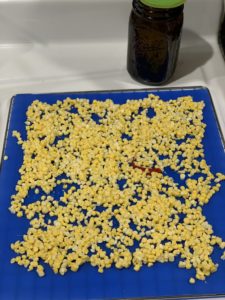
Making cornmeal in a dehydrator
Since non-GMO corn is very hard to find, I purchase a lot of it when I find it. Locally, there is only Earth Fare that sells non-GMO corn. Freezing the corn once steamed is mostly done in our home. But, we always save room for drying corn to make cornmeal for cornbread during the year. Finding cornmeal that is from non-GMO corn has been fruitless. If you know of a place that sells this type of cornmeal, please leave a comment in the comment section below.
Using an oxygen absorber would definitely be a choice here. No matter how hard you prepare for keeping out the bugs, mostly weevils out of cornmeal, unfortunately, it does happen. Freezing the dried cornmeal is something that is just as easy as that. I freeze the dehydrated cornmeal in a canning jar and store it in the freezer for up to a year. Once you make homemade chili on a woodstove in the dead of winter and add previously fresh and dried corn to cornbread, you’ll understand why all the extra steps are worth it!
What seasonal fruits are good to dehydrate at home?
Seasonal fruits, such as oranges, strawberries, mangoes or cherries are also some of the best-dehydrated foods. You can dehydrate the seasonal fruits easily and enjoy them throughout the year.
Drying citrus
I use a lot of lemons throughout the year for many things. When I am not adding lemons to moonshine to make an awesome cleaner, I use lemons in baking. To read out making non-toxic cleaners using lemons, you can find that post HERE. Drying the peels is easy. Wash the citrus thoroughly with FBC veggie soap and pat dry. Roll the lemons or oranges back and forth on the counter to release the juices. Cut the citrus in half and squeeze out the juice. Once all the seeds and juice are squeezed, remove all the fleshy pith from the fruit. Leaving the pith will make the dehydrated powder bitter. Dehydrate according to the method you choose.
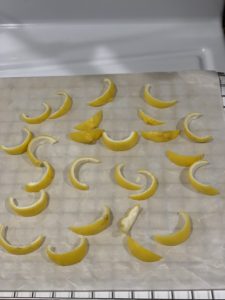
What are the benefits of dehydrated foods?
Dehydrated foods are extremely, healthy and safe for you. They contain the minerals and nutrients that were originally present in the food. Dehydrated foods are far better than preserved food or cooked food because they do not have a high-fat content. A study in the North American college journal showed that dehydrated fruits such as cranberries, strawberries, and cherries contain twice the amount of nutrients, natural enzymes, and minerals than their fresh versions. Moreover, seasonal fruits are not available for use year-round. Dehydrated foods can be enjoyed throughout the year and even taste better than the fresh versions. Freezing doesn’t always provide the best way of preserving. Freezing and canning also take quite a bit of cabinet space. Dried herbs especially have a stronger taste when dried than when used raw. I have a whole post on drying herbs, that can be found HERE.
Dehydrating foods at home without chemicals or preservatives
Dehydrated foods do not contain any chemicals or added preservatives. The only ingredient that you are using is the food that you are dehydrating. Freshly squeezed lemon juice may be used as well as fresh herbs and spices. Foods that are dehydrated are free from any toxic chemicals, toxins, preservatives, artificial flavors, and colorings. Vegetables and fruits that are properly dehydrated can last more than 6-7 months. Dehydrated fruits and vegetables are safer to eat than the chemically processed food with preservatives.
Dehydrating food saves money
Dehydrating food at home will be saving you the cost of buying expensive dehydrated food from the grocery market. You will no longer have to run down to the market to buy fresh fruits and vegetables every day. You can dehydrate the foods and use them for at least 6 months or so. I have an organic garden and I know that when I dry my own produce, it will be organic and natural. Since it costs pennies to run the dehydrator, I can work in small batches as the garden produces in small amounts and not all at once.
Storing dehydrated foods
By removing the water content and the moisture from the food, you are inhibiting the growth of bacteria, yeasts, and molds. This can make the food last longer than ever. You won’t have to worry about the food getting rotten. Moreover, dehydrated foods are very easy to store. For instance, a dehydrated pear shrinks to half the size of the fresh version. You can store the dehydrated foods pretty easily and at half the amount of space. I store all my dehydrated foods in a canning jar with the air removed. I remove the air by using a tool called Foodsaver, a fresh saver.
Using oxygen absorbers is a preference. I have used them for a few years but I don’t worry if I do not have on hand when it comes to dehydrating foods.
Do dehydrating foods lose vitamins?
Research has shown that some vitamins, such as vitamin A and vitamin C are lost while dehydrating the food as vitamin A and vitamin C are light sensitive. However, traces of these vitamins are still found in the sun-dried or dehydrated food. The research has shown that dehydrating the food only lessens the nutrient and mineral content by 20-22%. The remaining nutrients, minerals, vitamins, and natural enzymes are still present in the dehydrated foods, such as the vegetables and the fruits.
However, there are different methods of dehydrating food. Some methods do not affect the nutrients and minerals content at all but some methods adversely affect the minerals and nutrient content. For instance, the sun drying the tomatoes can deprive you of the important minerals, vitamins, and nutrients in them. I only dehydrate and powder tomatoes to use for a paste, not as a main staple.
Is dehydrating food safe?
The dehydrating process extracts the water content and moisture of the foods. This inhibits the growth of microbes and bacteria on the food and keeps the food safe for indefinite periods of time. However, some research studies have shown that dehydrated foods are not microbiologically safe. There is far less chance of bacteria if the food is cleaned and properly dried. As with any foods, foul smell is an indicator that food is spoiled. If for any reason, the food gets moisture and spoils, I throw it in my compost tumbler. If I don’t eat nor do my animals including the chickens. The worm bin or compost doesn’t mind if the product is spoiled. Meat never goes to the worms or compost pile. The meat would be placed in the kitchen grinder and washed down the drain.
Dehydrating foods for dogs, African Gray parrots, and chickens
First of all, dehydrating foods for dogs is safe if the recommended precautions are taken. My fur baby loves dehydrated fruits and veggies. I am sure she doesn’t know what she is eating. She doesn’t care for the diced carrots and picks them out. Therefore I powder them.
Secondly, powdering veggies she doesn’t prefer and sprinkling over her food saves her picking them out.
Lastly, the cost savings are doubled versus buying. Making chicken breast strips is by far her favorite. The cost of a few dehydrated chicken strips is very expensive not to mention the plastic them are packaged in. I tend to use a very small dicer tool for making dog food since she is a little dog and with small teeth makes it easier for her to chew. The sweet potato chews are only made for our Great Pyrenees since she has the teeth for them. Want to read about The Great Pyrenees, that post can be found HERE?
When making smoothies and pressing the fruit juice through a juicer, it leaves a lot of fruit pulp. The leftover and usually discarded pulp get put in the dehydrator for the chickens to eat once dried. I only have a few girls and the fresh pulp is usually too much for them to eat at one time. Drying the pulp is a way to extend the treats that can be given to them throughout the year. Obviously, I mark the container, “for chickens”. Also, marking the dehydrated foods for the furbabies.
I dehydrate the Jalapeno pepper tops and seeds for my African Gray parrot, she loves them. This way I can ensure she is getting organic, non-GMO food. Some of the innards, seeds, and toppers will be made into insect spray during the summer months for the garden.
Dehydrating foods for backpacking
My son loves to backpack, hike and ride his mountain bike. Carrying heavy food during those activities can slow a person down with the weight. It’s important that he has protein snacks. I pack him a little “energy bag”. Meat jerky is the first thing that goes in the bag. Surprisingly, he still loves the “nana candy” (aka banana chips) and can use them while hiking. I always have homemade yogurt on hand and making yogurt chips is easy and so good to eat, not to mention lightweight in the backpack. Raisins are another snack that he enjoys when hiking and biking. Fruit leathers are requested especially during winter when he wants something dried from the summer.
Dehydrating food in the oven
Yes, it is possible to dehydrate food in the oven and with the sun for that matter. But this post will be focusing on dehydrating food in an electric dehydrator. There are many tutorials out there that concentrate only using an oven to dehydrate. Since I do a lot of dehydrating every year for the last 30 years or so, I use an electric dehydrator. CNET has a post on how to dehydrate using your oven, that post can be found HERE.
Shop Here
We are a participant in the Amazon Services LLC Associates Program, an affiliate advertising program designed to provide a means for us to earn fees by linking to Amazon.com and affiliated sites.
You will not incur extra fees or charges for using the links. We only recommend items we believe in and have tried. If I personally make or sell an item, I will mention this in the post for each item.
Click on the Bar of Dish Soap to Visit Our Amazon Storefront!

Farmhouse Basic Veggie Wash Soap can be found on Amazon
Stainless steel dehydrator can be found on Amazon
Potato Ricer can be found on Amazon
Berkey Water Filter System can be found on Amazon
Handy Dough Whisks can be found on Amazon
Kitchen Scale can be found on Amazon
Foodsaver, Fresh Saver can be found on Amazon
FoodSaver Vacuum Sealer Wide-Mouth Jar Kit with Regular Sealer and Accessory Hose can be found on Amazon
Non-Stick sheets for dehydrating can be found on Amazon
The Instant Air Fryer can be purchased at Wal-mart, either online or in the store. I believe this appliance is exclusive to Wal-Mart, that is what I found to be when I ordered one during the summer.
CONCLUSION
To conclude, dehydrated foods are available all across the globe and many people, who cannot cook every day opt for dehydrated food as they are nutritious, easy to store, safe, healthy, ready-to-eat and free of any artificial flavors and preservatives.
My advice would be to spend the money upfront (if feasible) on a good dehydrator as I have listed here. It’s equivalent to a commercial dehydrator, to say the least. I wish I would have purchased one from the beginning of my drying days. Unfortunately, 30 plus years ago we were not able to afford such a luxury machine and made do with what we could afford at the time.
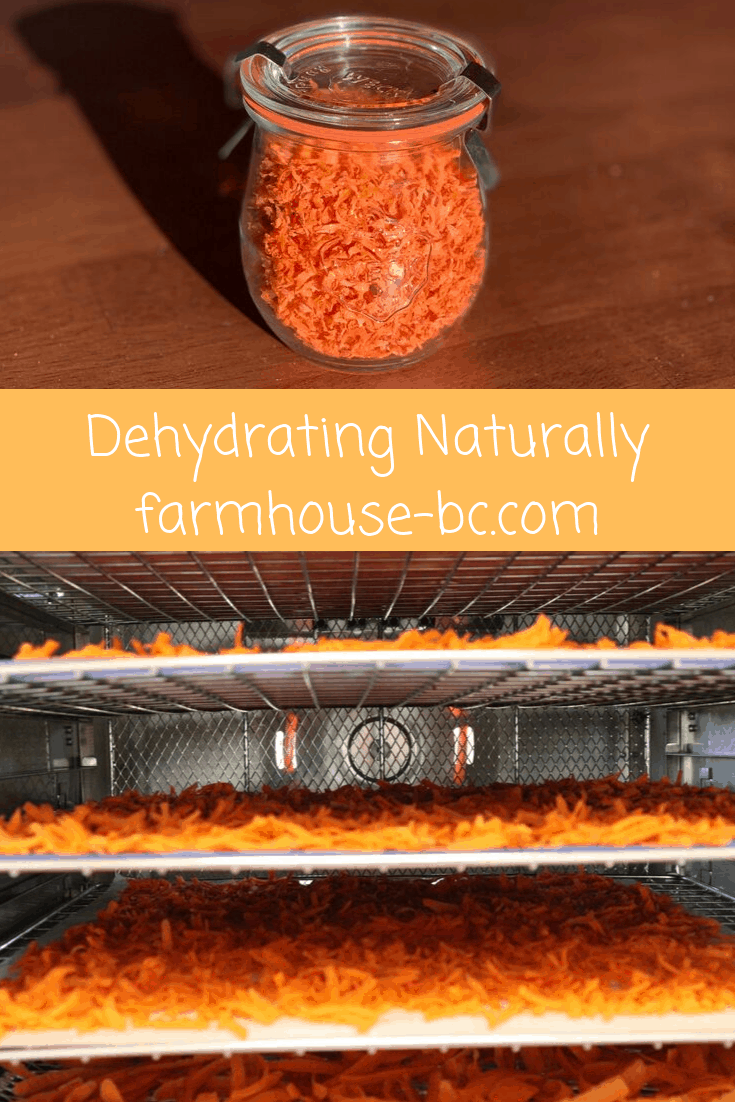
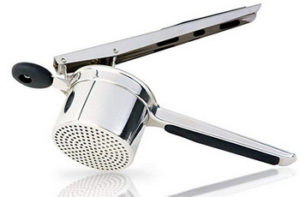
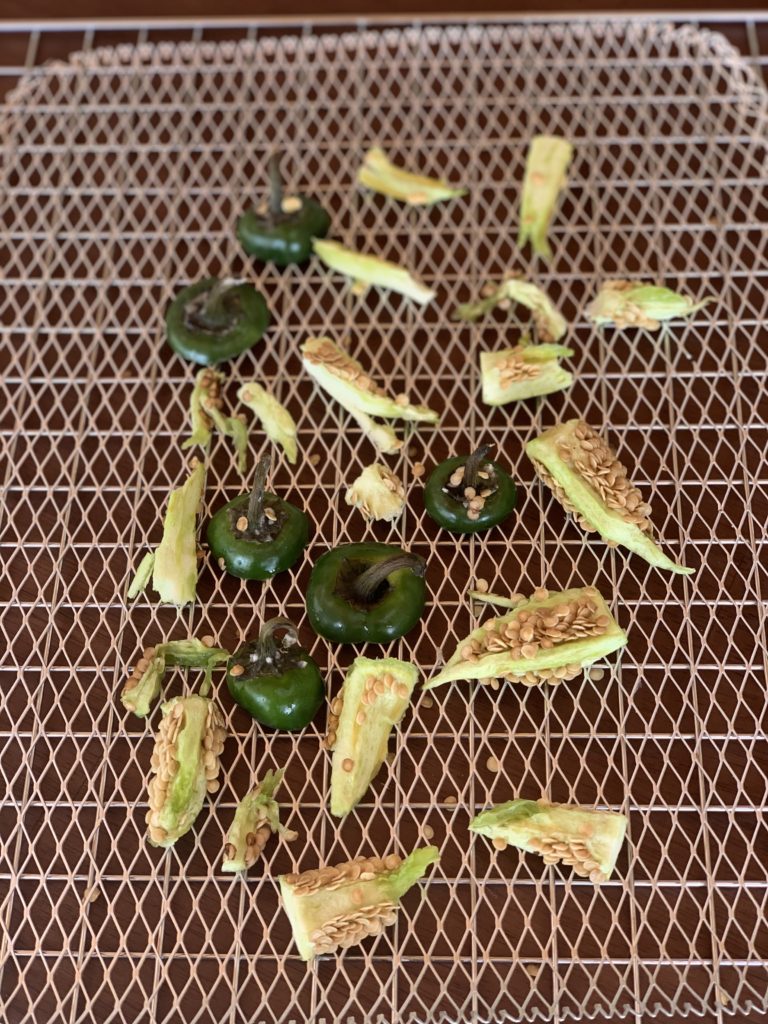

Pingback: Fish Emulsion Fertilizer, How To Make And Use! ⋆ Farmhouse-bc
Pingback: Attract More Butterflies In 10 Easy Tips! ⋆ Farmhouse-bc
Pingback: Vertical Gardens For Small Spaces ⋆ Farmhouse-bc
Pingback: Knowing The Difference Between Vermiculite And Perlite?
Pingback: Elderberry Vs Pokeberry-the Shocking Difference Of The 2! ⋆ Farmhouse-bc
Pingback: Hanging Flower Basket ⋆ Farmhouse-bc
Pingback: Seed Organization In 6 Amazingly Simple Ways ⋆ Farmhouse-bc
Pingback: Oyas And Ollas Made Easy For Your Garden ⋆ Farmhouse-bc
Pingback: Growing Millet Easily For Birds ⋆ Farmhouse-bc
Pingback: Delicious And Easy Homemade Egg Noodles For Beginners ⋆ Farmhouse-bc
Pingback: Hügelkultur Raised Beds ⋆ Farmhouse-bc
Pingback: How To Prune Basil ⋆ Farmhouse-bc
Pingback: Affordable Chicken Thigh Recipes Made Easy ⋆ Farmhouse-bc
Pingback: Corn Chow Chow Relish - Farmhouse-bc
Pingback: Hate Grocery Shopping? Stock up the Pantry this Fall! - Vintage Kitchen Vixen
Pingback: Fermented coleslaw recipe - Farmhouse Basic Collection.
Pingback: Zucchini Bread Recipes-Cinnamon and Chocolate Coffee - Farmhouse Basic Collection.
Pingback: Growing and Using Lemongrass - Farmhouse Basic Collection.
Pingback: The Fluffiest Sourdough Waffles for Two - Farmhouse Basic Collection.
Pingback: Best creamy moonshine horseradish mustard recipe - Farmhouse Basic Collection.
Pingback: Buttermilk DIY - Farmhouse Basic Collection.
Pingback: DIY Mercury Glass with vinegar and water - Farmhouse Basic Collection.
Pingback: Easy Sweet and Sour Sauce Recipe - Farmhouse Basic Collection.
Pingback: Amazing benefits of Elderberry - Farmhouse Basic Collection.
Pingback: Carrot cake with dehydrated carrots - Farmhouse Basic Collection.
Pingback: Dehydrated pumpkins and recipes - Farmhouse Basic Collection.
Thanks Jenn! I use it to dry the primitive dolls I make, spices, fermented foods, jerky, etc. I leave it out all year long on the porch because I use it so much. I find it a very useful tool. Go see dad! LOL
I gave my dad and Excalibur dehydrator a few years ago. He only uses it for jerkey. I think I need to borrow it from him! This is an excellent thorough post!
Great post and you covered so many question one might have. Happy dehydrating 🤣!
This is a great idea! My husband just got back from a big hiking trip in Colorado. I’m thinking maybe I can make some dehydrated meals for his next trip!!!!
I can see how this could be really fun!! I would love to dry herbs especially!
Girl, once you find out how much fun it is, you’ll never stop. LOL I dehydrate everything! Dried herbs are the best, the flavor is so intense versus non-dried. Thanks for the comment and let me know if you post using dehydrated foods, I would love to link to it in this post!
You’ve inspired me to start dehydrating food! I love apple chips and those banana chips sound terrific. My mom gave me a dehydrator for Christmas last year and I used it once to dry parsley. Time to bring it out!
Thank you for the informative post. We make gluten-free beef jerky alot. I actually have apple and orange slices in the dehydrator right now. I’m going to try some of your food recommendations the next time I use my dehydrator. Have a great day!